These Amazon Wholesale Suppliers Want Your Business -- Here’s How to find them

Allee Evensen
September 24, 2019
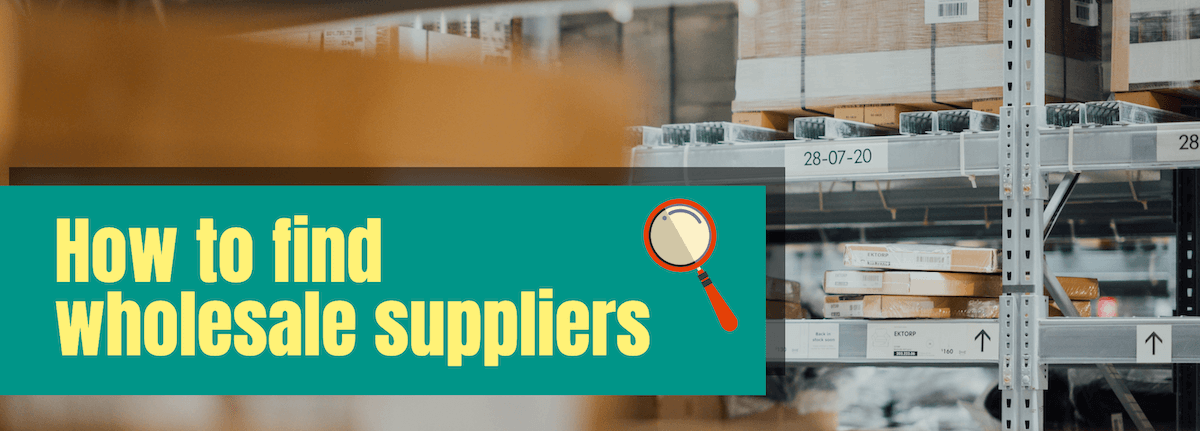
If you’ve kept an ear toward the Amazon forums lately, you’ve likely heard the naysayers.
“Amazon is DEAD.”
“There are no products with good profit margins.”
“Amazon just isn’t what it used to be.”

The debbie downers are correct from one perspective; In 2019, the Amazon selling game has shifted. Making money through retail arbitrage isn’t a safe or reliable bet anymore.
A decade ago, things were completely different. Arbitrage sellers didn’t have to use wholesale directories or do FBA supplier research. In fact, their business strategy probably looked something like this:
- Picking up some new board games from a local toy store and listing them at a 300% markup
- Collecting old college textbooks for pennies on the dollar and reselling them at 500% margins
- Finding some discontinued iPods at the local Best Buy and proceeding to clean out every store within 400 miles.
Here’s a little secret: the selling methods may have changed, but there’s plenty of money on the table if you’re looking in the right places. 10 years ago might have been the best time to start selling on Amazon, but the second-best time is right now.
There are still millions of sellers making a killing on Amazon using one tried and tested business model: Wholesale.
This article will go over wholesale basics and teach you the easiest, most efficient way to find Amazon U.S. wholesale suppliers.
Let’s jump in.
What is wholesale?
Buying Wholesale is when a retail business purchases bulk goods from a manufacturer or distributor. Typically, the business then resells these products to individuals using a platform like Amazon, eBay, or a physical store.
Many times there are multiple “wholesalers” or “distributors” before the product reaches your hands. Sometimes this “supply chain” of businesses is long; each member of the chain takes a cut of the profit.
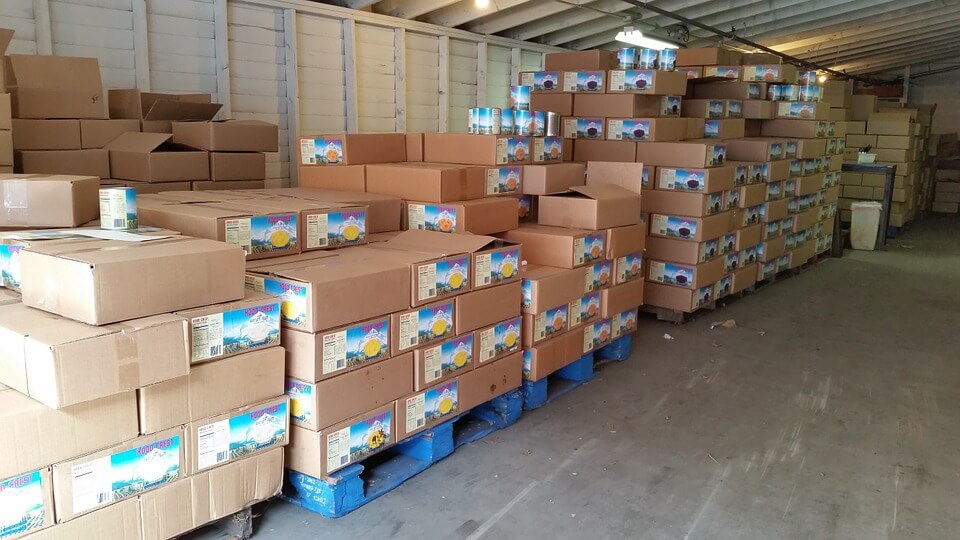
As a new Amazon seller, you’re probably at the bottom of the chain. This may make your profit margins seem small, but you can move up the supply chain over time to get better prices on the product. Occasionally, you may be able to purchase directly from manufacturers in order to get the best prices.
The most important thing to remember is this: The wholesale price you see on paper is almost always negotiable. Never create an order without asking about bulk discounts, free shipping or coupon thresholds for future orders.
5 reasons wholesale beats other business models
There are countless business models you can use to sell on Amazon, but choosing the right fit is critical.
What’s so important about selling products from established brands? Do Amazon FBA wholesale suppliers really exist? Why not skip wholesale and go straight to private label?

These are questions any new FBA seller should ask. Naturally, there are pros and cons to different models of amazon selling, but there are a few reasons wholesale is the best place to start, especially for beginners.
Volume
Even though wholesale margins are typically lower than private label or retail arbitrage, this can be made up in volume. Most wholesale products are already branded by major companies -- think Crayola, Bosch, and Moleskin. Because they have huge customer bases and often have well-established listings, you’ll sell more products than you would by building listings from scratch.
Consistency
One of the best parts about a wholesale business model is that once you find a product, you can consistently re-order for years to come (unless the product is discontinued). It doesn’t take long to build a catalog of hundreds (or even thousands) of products. It’s difficult to do this kind of optimization with retail arbitrage or private label.
Scaling
It’s pretty simple to scale a wholesale FBA business -- if you need more products, it’s as simple as looking for new suppliers. By building relationships over time, you’ll always have constant access to top-selling items. In addition, you’ll get much better bulk discounts than any other business model, like drop shipping.
Risk
Thousands of Amazon sellers have their accounts suspended every month, mostly due to unscrupulous sourcing or drop-shipping errors. Having invoices from real suppliers (versus receipts from retail arbitrage or purchase orders from a Chinese factory) virtually eliminates this risk.
How to Find Wholesale Suppliers and products
You’ve done the research and you’re ready to put in the time. However, one huge question remains: How do you find wholesale suppliers who will work with you?
First things first: skip the expensive wholesaler directories, at least as a beginner. These may come in handy later (we go over this in detail here) but without prior knowledge, you’ll spend hundreds of dollars for an unvetted list that will take an enormous amount of your time.
Second, be realistic with your time. Most new Amazon sellers are running their stores as side businesses. Very few people have a mass of uninterrupted hours to spend calling suppliers each week. With jobs, families and general life, digging through the internet to narrow down good companies can be job within itself.
One way to simplify this sourcing process is by using the ProfitGuru Brands Database to make lists of brands with the most potential. It takes less than 10 minutes to create a list of wholesale companies within your niche, and it gives you the ability to quickly eliminate suppliers who aren’t open to new Amazon sellers.
Here’s how it works:
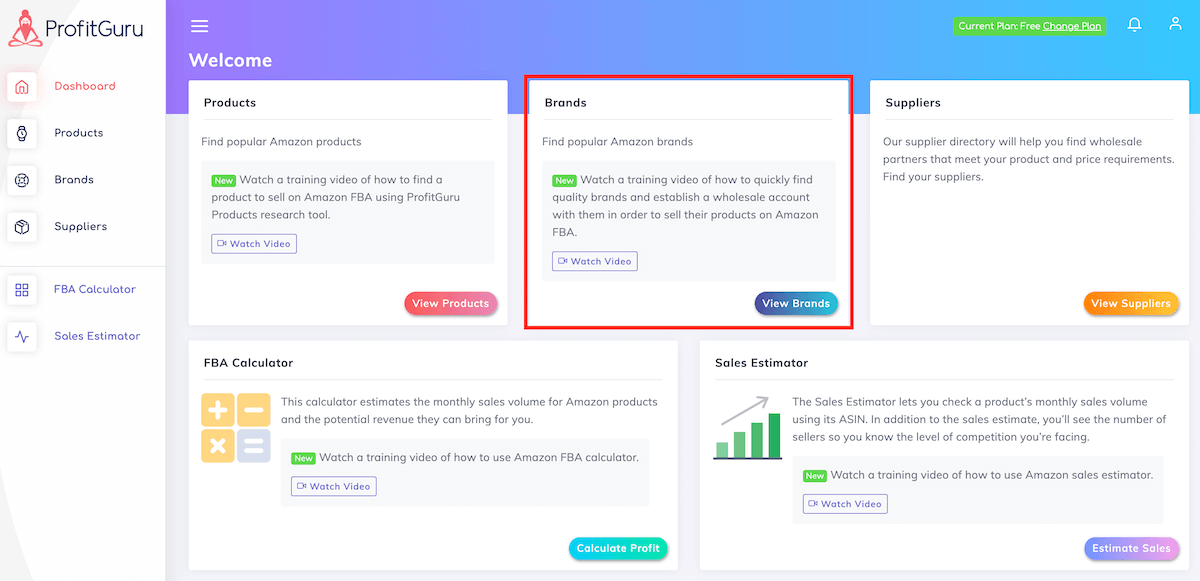
First, open the brands app within the ProfitGuru.com website.
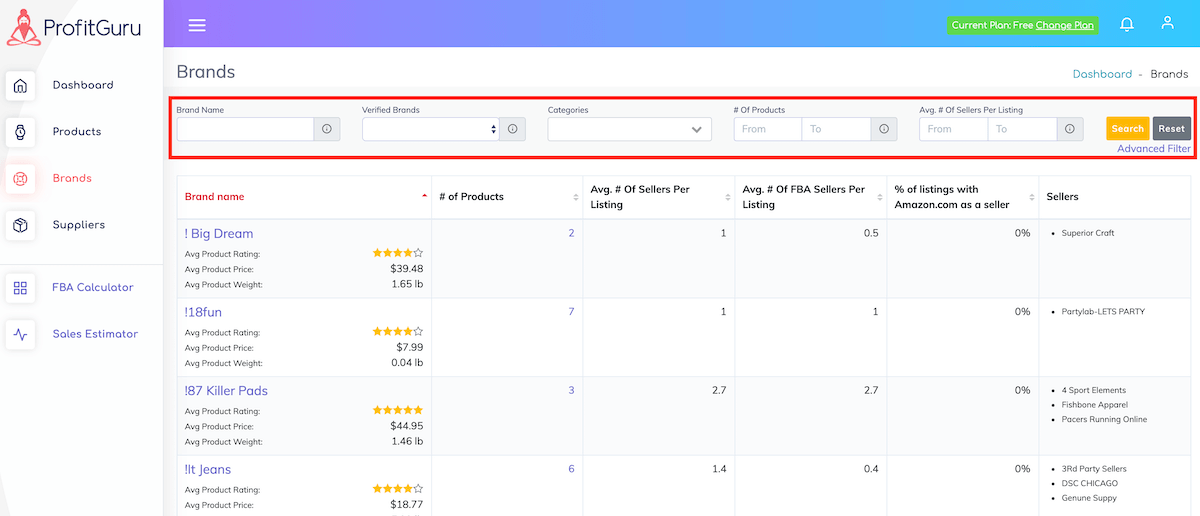
Use the different filters to narrow down the list of 180,000 brands to the ones that fit your needs. Here’s an explainer for the most important filters:
Verified brands
Verified brands will eliminate all the suppliers who have not been vetted through our ProfitGuru experts.
Categories
Categories let you look at brands that supply products within specific Amazon categories and niches.
# of Products
# of Products allows you to target bigger or smaller wholesalers. Large companies typically have catalogs with hundreds of products while smaller companies may only have a few products listed on Amazon.
Avg. # Of Sellers Per Listing
Avg. # Of Sellers Per Listing is the average number of sellers a brand has for each Amazon listing. A high number indicates the brand has a lot of competition, but likely has an easier approval process. A low number (especially 1 or 2) indicates the brand is highly restrictive and is likely only sold by Amazon or the brand owner themselves.
Avg. # Of FBA Sellers Per Listing
Avg. # Of FBA Sellers Per Listing is the same as # of sellers but applies only to the number of FBA sellers.
% Of Listings With Amazon.com
% Of Listings With Amazon.com shows you the percentage of listings within the brand where Amazon is listed as a seller. The lower the percentage, the stronger the supplier is. It’s rarely advantageous to compete with Amazon as a new seller.
Weight
Weight tells you the average weight of the products the brand carries. While you generally want to aim for small products, be careful in using this filter. Some brands carry very large products that can make this number seem high. For example, American Girl sells both doll clothes and large doll accessories. Even though their average is high, it doesn’t mean there isn’t a brand opportunity.
There are a few things to keep in mind as you create your list:
- Search for brands that have a good number of high-volume, popular products but have an average between 3 and 10 sellers on their products. This will eliminate brands that are over- and under competitive.
- Create specific parameters before you start searching. If you have an idea of what niche you want to sell in (or at least the general type of project) it will be much easier to eliminate brands that don’t fit your business model. Here’s an example of some solid parameters:
- My niche is a board game
- I don’t want to spend more than $20/unit
- I’m looking for lightweight products that are smaller than a shoebox
Tip & Tricks for Supplier Outreach
Now that you have a solid list of brands, it’s time to make contact with a rep inside the wholesale organization of your choice. This can be done via email or phone call, though a call will generally help you land an account more quickly. There are a few vital steps to take before reaching out.
Research
Before you make any contact, do your research. Wholesalers want to know you’re a good fit for their business models and/or brands. If you’re currently selling dog food, it will be a challenge to get a company to sell you coffee.
You need to know exactly what types of products to ask for, as well as some general background on the company. Ask about specific products you found using ProfitGuru, so the company rep knows you’re a serious seller rather than a fly-by-night.
Ask Questions
Asking questions makes you sound like you know what you’re doing, even if you’re brand new to the e-commerce game. They can also save your business an enormous amount of money. Inquire about shipping costs, lines of credit, minimum orders and bulk discounts.
Be Ready to Describe Your Business
Any good supplier will vet your business. If they don’t, consider it a red flag: buying products from FBA wholesalers who will sell to anybody means you’ll have lots of competition and almost no margin.
Make sure to have your EIN, tax ID, state licenses and link to your Amazon storefront on hand. Some reps are willing to set up wholesale accounts on the spot if you’re prepared.
Suppliers will also want to know if you have a physical storefront/warehouse and where it’s located. If you don’t have space, carefully plan so you can have one in the future -- it will open an enormous amount of door when it comes to suppliers.
Accept Rejection
You won’t fit into every wholesaler's business model, just as they might not be a good fit for you. It may come down to a lack of established reputation or upfront cash. If a supplier tells you no, move on -- you can always come back when you’re better established.
I’m in! How do I know what quantity to order/ship?
Congratulations, if you’re at this point.
You’ve found some promising products, been approved by a supplier, and now you have a price list and are ready to order.
Because every business model is different, there is no one answer to this question. However, the general rule of thumb is to keep 6-8 weeks of inventory on hand during the first 3 quarters of the year, and 8-12 weeks of inventory from October to December (unless you won’t get a sales uptick at Christmas). Here are a couple of things to keep in mind as you calculate how much inventory to order/send:
-
Amazon charges monthly storage fees for each cubic square foot of space your inventory takes up in their warehouses. This fee more than triples between October and December ($.69 vs. $2.40). This fee isn’t a huge deal if you sell slap bracelets where a single square foot can house your inventory for a year. If you’re selling microwaves, the story becomes entirely different.
-
Amazon also charges a monthly long term storage fee for products that have been warehoused for more than 365 days. As a rule of thumb, you generally don’t want to keep any product warehoused for more than a year.
-
Oversize items occur fees much more quickly than standard size items. If your items weigh over 20 pounds or are larger than 18″x 14″x 8” including packaging, expect to pay at least 400% more.
Remember: It often takes boxes three weeks to check into Amazon and become active in your inventory. During Q4, it can take even longer. As you’re planning out what quantities you want to order, create a calendar for reorder so you don’t go out of stock.
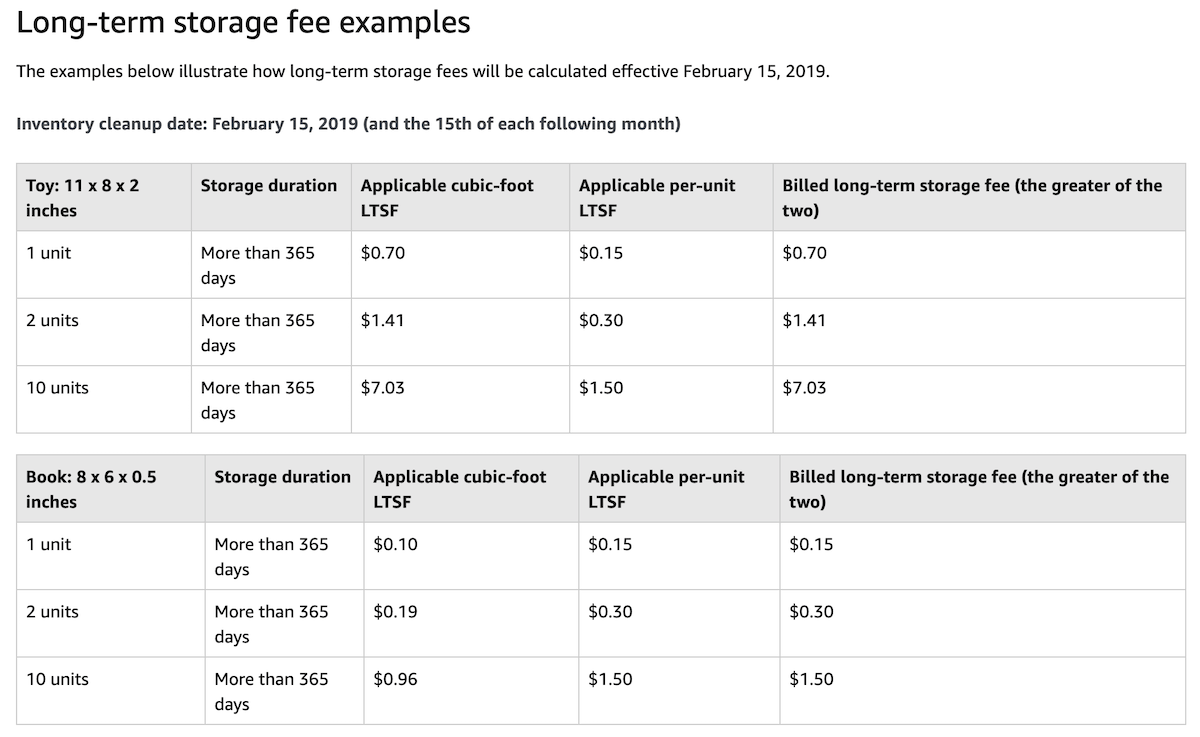
Other Top Wholesale Websites
There are hundreds of websites out there that claim to help you find wholesalers, but most of these are oversaturated “directories” that only provide dead leads. Consider using some of these Profit-Guru approved sites instead.
4WholesaleUSA
With more than 700 suppliers, this guide provides a solid list of consumer-oriented products. This includes everything from apparel to toys.
Website: www.4wholesaleusa.com
ToyDirectory.com, Inc.
ToyDirectory is an enormous catalog with more than 90 categories of children’s toys. With more than 2000 different companies listed, it’s easy to find solid suppliers.
Website: www.toydirectory.com
Cleverwholesale.com
Clever Wholesale is an initiative aiming to provide a free source of information about U.S. wholesalers. The wholesale network has been actively indexing wholesalers since 1998 and has worked closely with a number of online entrepreneurs to provide product sourcing solutions for start-up entrepreneurs entering into e-commerce and online retail.
Website: cleverwholesale.com
The Bottom Line
The bedrock of your wholesale business is great suppliers. Amazon FBA isn’t an easy business, nor a quick money fix; it takes a serious time investment to be successful. Just remember: you’re building a business that will pay off for the next 10, 20 or 30 years. Getting started now is the best choice you can make.
On this page
The Free Email Course to KickStart Your Amazon Journey
Getting from an idea to your first few sales in 7 days

